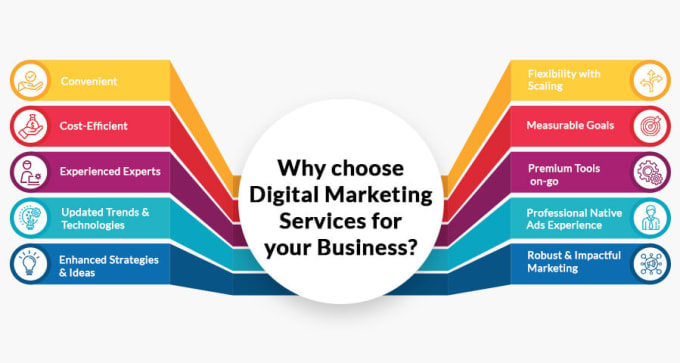How Does SEO Work in Digital Marketing?
In the dynamic world of digital marketing, Search Engine Optimization (SEO) plays a pivotal role. SEO is the art and science of enhancing a website’s visibility on search engine results pages (SERPs), thereby driving more organic (non-paid) traffic to the site. But how exactly does SEO work in digital marketing? Let’s dive into the intricacies of SEO and its profound impact on digital marketing strategies.
The Basics of SEO

What is SEO?
SEO stands for Search Engine Optimization. It involves optimizing your website to rank higher on search engine results pages, thus increasing the visibility of your website to potential visitors.
Key Components of SEO
- On-page SEO: Refers to the practices used to optimize individual web pages in order to rank higher and earn more relevant traffic. It includes optimizing content, HTML code, and site architecture.
- Off-page SEO: Refers to actions taken outside of your own website to impact your rankings within search engine results pages. It includes backlinks, social media marketing, and other external signals.
- Technical SEO: Focuses on the backend structure and foundation of a website. This includes site speed, mobile-friendliness, indexing, crawlability, site architecture, and security.
Keyword Research
Importance of Keywords
Keywords are the terms and phrases that people enter into search engines. They are crucial because they help search engines understand what your content is about and match it with users’ queries.
How to Conduct Keyword Research
- Identify Your Niche: Understand the main topics related to your business.
- Use Keyword Research Tools: Tools like Google Keyword Planner, Ahrefs, and SEMrush can help identify popular keywords.
- Analyze Competitors: See which keywords competitors are ranking for.
- Long-Tail Keywords: Focus on long-tail keywords which are less competitive and more specific.
Tools for Keyword Research
- Google Keyword Planner
- Ahrefs
- SEMrush
- Moz Keyword Explorer
On-Page SEO
Title Tags and Meta Descriptions
These are HTML elements that provide information about your webpage to search engines and users. Title tags should be concise and include your target keyword. Meta descriptions should be compelling and relevant to entice users to click.
Importance of Quality Content
Content is king in SEO. High-quality, relevant, and valuable content attracts and engages users, encouraging them to stay longer on your site, which positively impacts your rankings.
Use of Headers and Subheaders
Headers (H1, H2, H3, etc.) help organize your content, making it easier for both users and search engines to understand. They should include relevant keywords to signal the content’s structure and main points.
Internal Linking
Internal links connect one page of your website to another. They help users navigate your site and spread link equity (ranking power) around your site.
Off-Page SEO
Backlinks and Their Importance
Backlinks are links from other websites to your site. They are critical because they signal to search engines that your site is authoritative and trustworthy.
Social Media Signals
Although not a direct ranking factor, social media activity can drive traffic to your site and increase your content’s visibility, indirectly supporting your SEO efforts.
Guest Blogging
Writing articles for other websites can help you gain exposure, build authority, and earn valuable backlinks.
Technical SEO
Site Speed Optimization
Site speed is a ranking factor. Faster sites provide a better user experience and are favored by search engines.
Mobile-Friendliness
With mobile-first indexing, Google predominantly uses the mobile version of the content for indexing and ranking. Hence, your site must be mobile-friendly.
XML Sitemaps
An XML sitemap helps search engines understand the structure of your website and find all your pages.
HTTPS and Site Security
Secure websites (HTTPS) are preferred by search engines. They also protect users’ data, building trust and credibility.
Content Marketing and SEO
Role of Content in SEO
Content is essential for SEO. It helps you target specific keywords, provide value to users, and earn backlinks.
Creating SEO-Friendly Content
Content should be high-quality, keyword-optimized, and relevant. It should also be structured properly with headings, subheadings, and bullet points for better readability.
Content Distribution Strategies
Promote your content through various channels like social media, email marketing, and guest blogging to reach a wider audience and drive traffic.
User Experience and SEO
Importance of UX in SEO
User experience (UX) is crucial because it affects how users interact with your site. Good UX can reduce bounce rates and increase time on site, both of which are positive signals for SEO.
Page Load Time
Faster page load times enhance user experience and are favored by search engines.
Navigation and Site Structure
A well-structured site with clear navigation helps users find what they are looking for and improves crawlability for search engines.
Mobile Usability
Ensure your site is easily navigable and usable on mobile devices to cater to the increasing number of mobile users.
Local SEO
Importance of Local SEO
Local SEO is vital for businesses that operate in specific geographic areas. It helps them appear in local search results, driving more foot traffic and local customers.
Google My Business
Claiming and optimizing your Google My Business listing can significantly enhance your local search visibility.
Local Citations and Reviews
Consistent NAP (Name, Address, Phone) information across directories and positive customer reviews can boost your local SEO.
SEO Analytics and Metrics
Tools for Tracking SEO Performance
- Google Analytics
- Google Search Console
- Ahrefs
- SEMrush
Key SEO Metrics to Monitor
- Organic traffic
- Keyword rankings
- Backlinks
- Bounce rate
- Conversion rate
Analyzing and Interpreting SEO Data
Regularly analyze your SEO performance data to understand what’s working and what needs improvement. Adjust your strategies accordingly.
SEO Trends and Future Predictions
Current Trends in SEO
- Voice search optimization
- AI and machine learning in SEO
- Video SEO
- Featured snippets
Future of SEO in Digital Marketing
SEO will continue to evolve with technological advancements. Staying updated with trends and adapting your strategies will be key to maintaining and improving your search rankings.
Common SEO Mistakes to Avoid
Keyword Stuffing
Overusing keywords can lead to penalties. Use keywords naturally within the content.
Duplicate Content
Duplicate content can confuse search engines and dilute the authority of your site. Ensure all content is unique.
Ignoring Mobile Users
With the increasing number of mobile searches, ignoring mobile optimization can harm your rankings.
Poor-Quality Backlinks
Low-quality or spammy backlinks can lead to penalties. Focus on earning high-quality, relevant backlinks.
The Role of Social Media in SEO
Social Signals and SEO
While social signals are not a direct ranking factor, they can amplify your content’s reach and visibility, indirectly supporting your SEO efforts.
Integrating Social Media and SEO Strategies
Use social media to promote your content, engage with your audience, and drive traffic to your site, complementing your SEO strategy.
The Impact of SEO on Brand Awareness
How SEO Builds Brand Credibility
Higher search rankings signal to users that your brand is credible and authoritative.
Increasing Brand Visibility Through SEO
SEO increases your brand’s visibility by making it easier for potential customers to find you online.
Conclusion
In conclusion, SEO is an integral part of digital marketing that can significantly enhance your online presence and drive organic traffic to your website. By understanding and implementing effective SEO strategies, you can improve your search rankings, provide a better user experience, and achieve your business goals.
FAQs
- What is SEO and why is it important?
- SEO stands for Search Engine Optimization. It is important because it enhances your website’s visibility on search engines, driving more organic traffic and potential customers to your site.
- How long does it take to see results from SEO?
- SEO is a long-term strategy. It can take several months to start seeing significant results, depending on various factors like competition, keyword difficulty, and the quality of your SEO efforts.
- Can I do SEO on my own, or do I need a professional?
- You can certainly do SEO on your own with the right knowledge and tools. However, hiring a professional can save you time and ensure that your SEO strategy is effective and up-to-date with the latest trends.
- What are the best tools for SEO?
- Some of the best tools for SEO include Google Analytics, Google Search Console, Ahrefs, SEMrush, and Moz.
- How does mobile optimization affect SEO?
- Mobile optimization is crucial for SEO as search engines prioritize mobile-friendly websites. A mobile-optimized site improves user experience and helps you rank higher in mobile search results.






1 thought on “How Does SEO Work in Digital Marketing?”